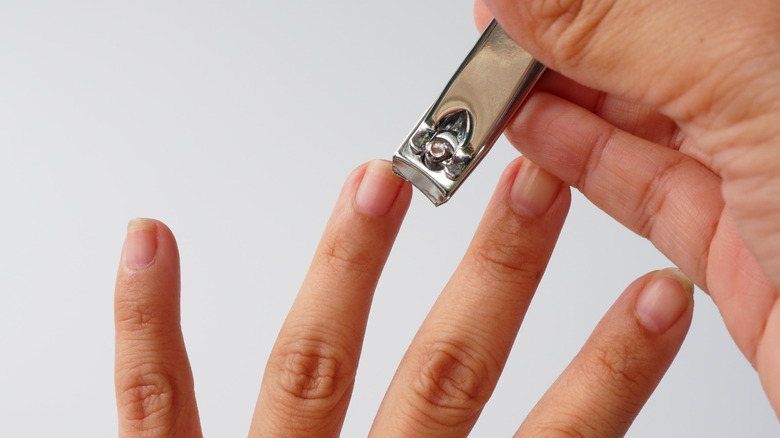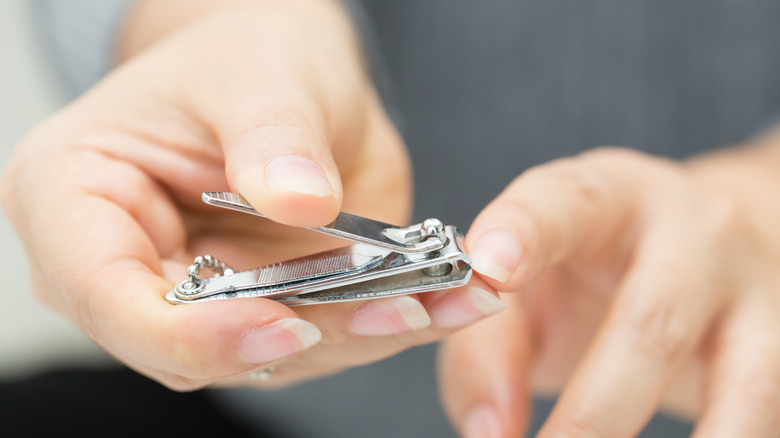You've Been Cutting Your Nails Wrong All Along
Cutting your nails might seem like the most straightforward part of your hygiene routine (be sure not to make these common mistakes). After all, the only step is just to clip your nails, right? Wrong. According to Reader's Digest, there's a high chance that you've been doing it incorrectly this entire time. Nail care is an important aspect of your health, and certain habits — such as pushing back your cuticles — can actually make your nail beds and roots susceptible to infection. As such, the guidelines set in place by the American Academy of Dermatology (AAD) should be your one-stop shop for all things nail care.
One of the most common mistakes, for instance, is failing to clean your nail tools. Dirty clippers can harbor all sorts of bacteria and even cause toenail fungus, per Doctors Kline and Green. The AAD echoed the same sentiment, and reported that you should disinfect your tools on a monthly basis. To clean them, place a small scrubbing brush in 70 to 90% isopropyl alcohol and let it soak. Then, use the soaked brush to thoroughly clean your nail scissors or clippers. Lastly, wash the tools off in hot water and make sure they're completely dry before putting them away.
Cutting nails properly requires the right tools and technique
Before you even pick up that nail clipper, you ought to soften your nails first. The AAD recommends that you soak your nails in lukewarm water prior to clipping. Looking for an easier method? Simply trim your nails right after you step out of the bath or shower. Once your nails are soft, make sure you grab the correct tools. Use a nail clipper only for your nails, and a toenail clipper only for your toenails.
Now, you're ready to begin. According to the AAD, your fingernails should be cut and trimmed to avoid snagging them on clothing and materials. To achieve this, they recommend to cut the nail almost straight across, and then use a nail file to round off the edges. This trimming method will keep your nails strong and prevent peeling, chipping, and breaking. It should also be noted that other sources recommend that you don't cut straight across. Healthline, for example, suggests clipping nails in threes, starting with one corner, then the other, and finally trimming the middle. This method should prevent the nail from cracking under the pressure. GQ recommends using rounded-blade clippers to mitigate the issue.
Whether you select one method or decide to experiment, everyone agrees that you should leave your cuticles alone and moisturize your hands when you're done, especially if it's cold outside. The extra moisture will improve the flexibility of your nails, further reducing the chances of splitting or peeling.

